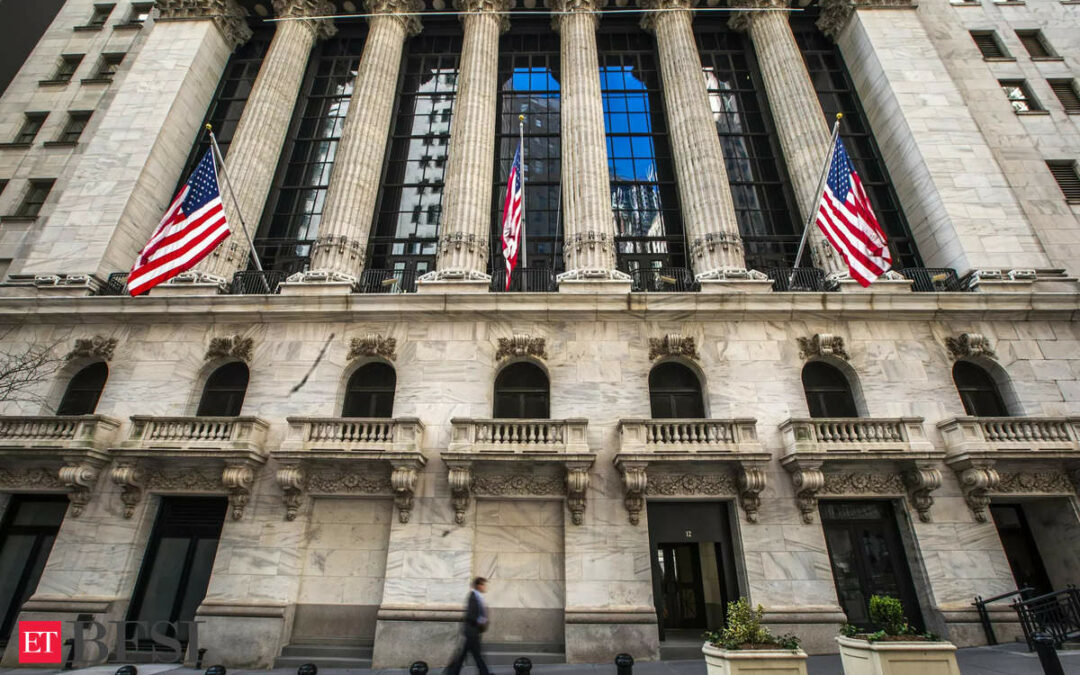NEW YORK – Strong economic data and worries over sticky inflation are pushing investors to reassess how deeply the Federal Reserve will be able to cut interest rates this year, fueling weakness in the U.S. government bond market.
Yields on the benchmark 10-year Treasury – which move inversely to bond prices – hit 4.429% on Wednesday, their highest level in over four months.
The selloff comes amid a broad shift in sentiment on the timing and magnitude of expected rate cuts. Futures markets on Wednesday showed investors are betting the Fed will lower rates by 70 basis points this year, compared to the 150 basis points priced in at the beginning of 2024.
Notably, investors have become slightly less optimistic on rate cuts than the Fed itself, which projected to deliver three 25 basis point reductions this year. Fed Chairman Jerome Powell in a Wednesday speech maintained that rates will fall later this year, despite stronger-than-expected growth.
“The Fed is starting to get ahead of the market because the Fed is saying ‘we’re going to cut’ and the market is saying ‘you don’t need to because economic activity is so strong,'” said Tony Roth, chief investment officer at Wilmington Trust Investment Advisors.
Bond yields are moving higher for several reasons. U.S. data has consistently come in stronger than expectations, leading some investors to believe that the Fed won’t be able to cut interest rates without risking an inflationary rebound.
The latest evidence of a robust economy came this week, when stronger-than-expected March manufacturing data was followed by solid U.S. job openings figures for February and other data pointing to labor market strength.
U.S. investment management firm PIMCO said in a 6-12 month outlook report on Wednesday it expects inflation to remain above the Fed’s 2% target. It still believes the central bank will start cutting rates in the middle of 2024, but said sticky inflation may lead to a more gradual path of rate cuts than in other economies.
At the same time, concerns over the state of U.S. finances that helped drive yields to 16-year highs last October have not dissipated, with many investors anticipating a rise in term premiums – or the compensation demanded to hold long-term debt.
The Congressional Budget Office last month forecast U.S. public debt will climb to 166% of GDP in 2054 from 99% in 2024 – though their outlook has improved from forecasts made last June due to spending limits passed by Congress and stronger projected economic growth.
Additional worries over an inflationary rebound could come if oil prices continue their recent spike. Brent crude settled at its highest level since October on Wednesday following concerns of a widening conflict in the Middle East.
Overall, yields on the 10-year have risen by 50 basis points since the beginning of the year. Some investors have used that as an opportunity to lock in yields with the hopes that bond prices will rise as the Fed cuts rates later in the year.
That trade, however, is increasingly becoming a test of patience, and investors will be closely watching Friday’s employment and consumer price data next week to assess how sustainable the current selling pressure in bonds is.
Year-to-date total returns – which include bond payouts and price fluctuations – are at minus 2.1%, according to the ICE BofA 7-10 year Treasury Index.
Meanwhile, net bearish positions in key two- and 10-year Treasuries futures last week have increased for the first time in three weeks, according to data by the Commodity Futures Trading Commission.
Kathy Jones, chief fixed income strategist at the Schwab Center for Financial Research in New York, said she still believes there is an opportunity to add more duration, or interest rate exposure, if yields rise further.
However, “it’s becoming less of a high-probability trade and more one that people are going to lose confidence in.”
Campe Goodman, lead portfolio manager of the Hartford Strategic Income Fund, believes the selloff in the bond market is unlikely to go much further, as higher yields draw income-seeking investors. He expects 10-year yields to trade between 4% to 4.75% and for inflation to remain under control.
“We’re not talking about a reacceleration in inflation, we’re talking about inflation stalling in the 3% range … I’m not that worried,” he said.











